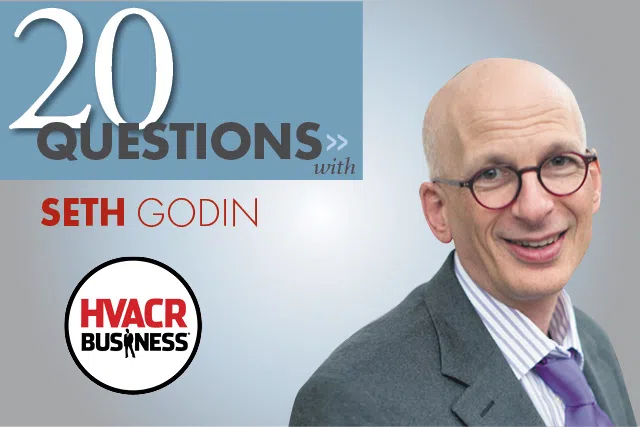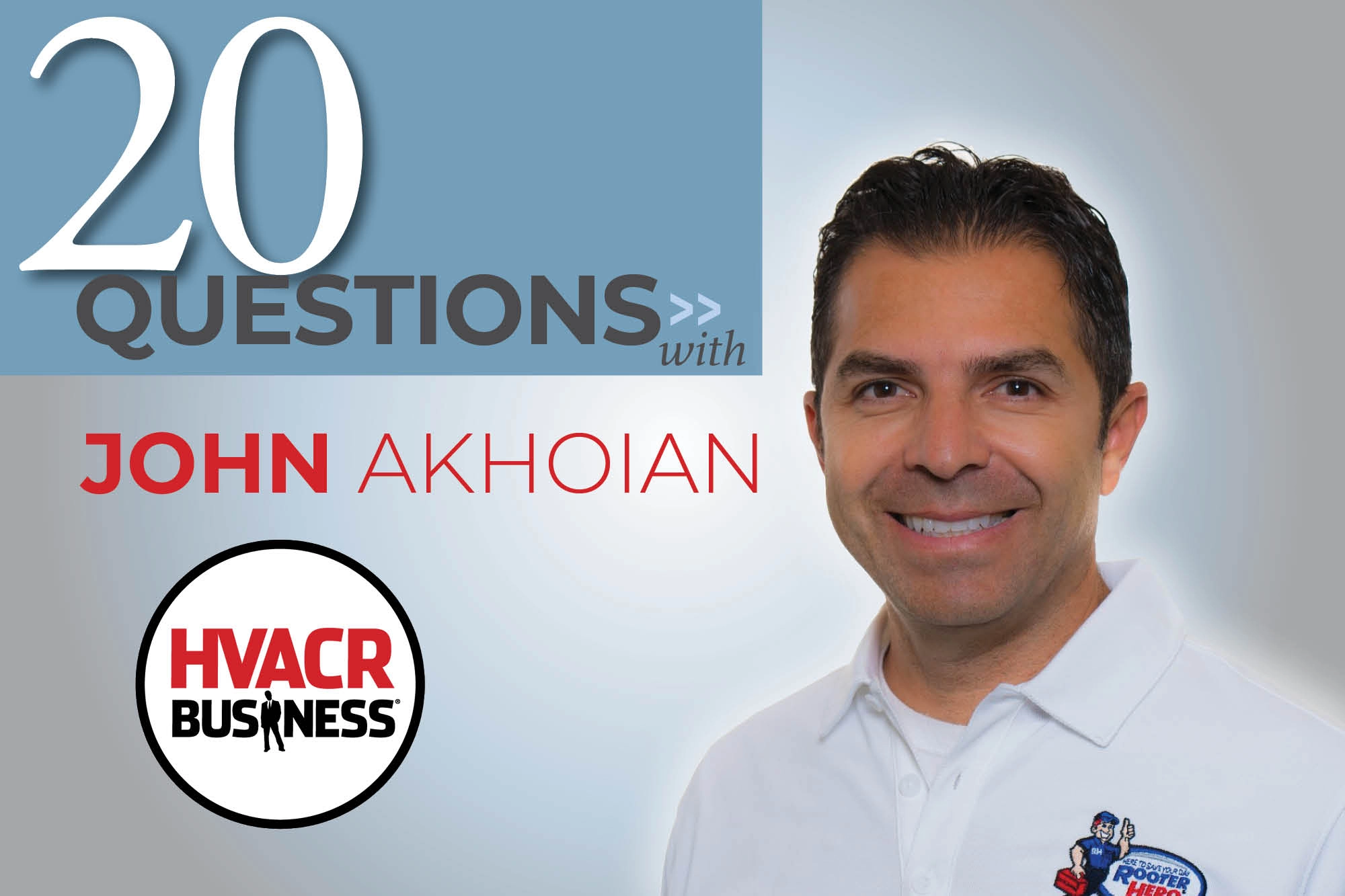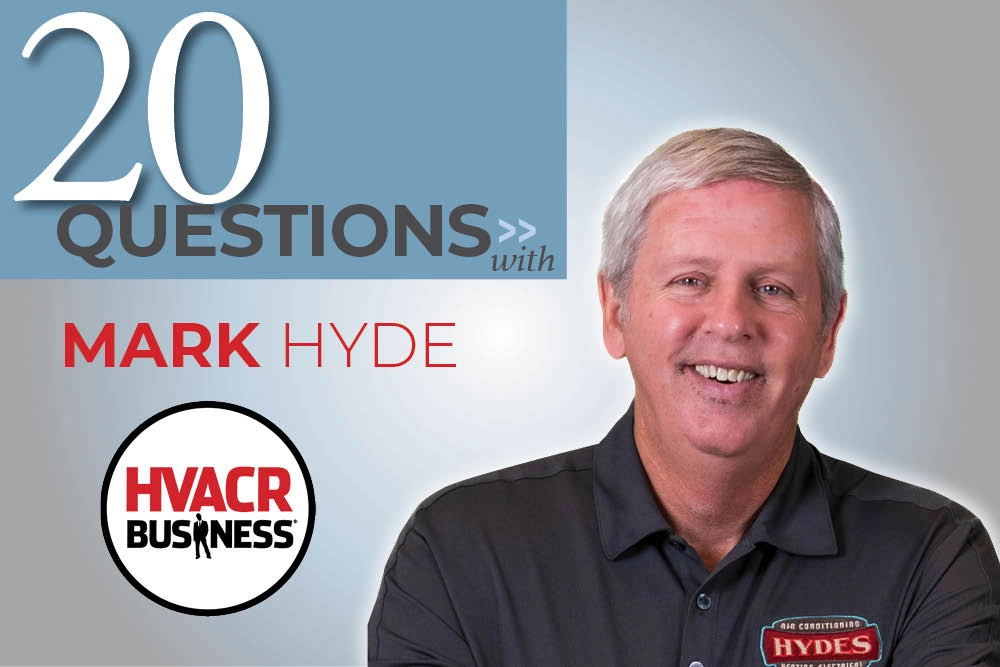HVACR Business Publisher Terry Tanker recently spoke with Seth Godin, New York Times best-selling author and entrepreneur. Godin, whose blog is considered to be the number one marketing blog by AdAge, discusses building something that matters, leadership and Permission Marketing.
1. Your degree is in computer science from Tufts — why didn't you stay in the computer field?
I have stayed with computers all along, just not the programming part of it — which I was never any good at. My first real job was as a brand manager with the company that invented educational computer games for kids. Then I used computers to supercharge my book packaging company and started my first Internet company where we did direct mail marketing.
2. What was your goal after you earned a graduate degree in marketing from Stanford?
My goal was to work at a fast growing company. I almost ended up working for Activision, which at the time was the fastest growing company in the world. At the last minute, things changed and I ended up going to Spinnaker (educational software) in Boston. That was my summer job, but I ended up staying.
3. Did you enjoy the environment at Spinnaker?
In the mid 1980s, there were a lot of companies making software. Those companies had very different cultures and ultimately it's the boss's choice. Working for Spinnaker was transformative for me because the president was an extraordinary guy, and he chose to build a company that was both professional and wacky. The biggest lesson I learned was that culture is a choice.
4. What was the culture at Yahoo?
After they acquired my company, I had very high hopes because, in 1999 the Internet and Yahoo were the same thing. The opportunities were huge. I learned that being a public company can be debilitating. There are choices you have to make and "How do I make the most money today?" or "How do I get the best press release today?" weren't for me. I was more concerned with "Am I building something that's going to matter?"
5. What's the cornerstone to that theory?
As a business owner, you're reacting to what's happening in the marketplace or leading the marketplace. Many simply react to what is thrown at them every day and that's not leading.
6. How do you describe leading?
Leading involves building long term relationships with people who want to hear from you and most service/trade business owners have an enormous trouble with this. It's not the way they grew up; it's not the way they think about businesses. Leaders aren't just thinking about "we'll do project X for this price." Building for the long haul is about relationships.
7. What leadership advice do you have for contractors?
The future is now. Contractors can go to a business or a residential customer and say, "I will pay you if you let me install an Internet-based thermostat. And then we will monitor how much money you saved and I'll report back to you." And, the contractor gets paid from the savings. Now the customer is looking forward to hearing from you. You have intimate knowledge of what is going on and how to make it better.
8. It's about building the relationship — right?
Right. Let me use an analogy. You work with a personal trainer. You're getting fit, healthier and you feel great. Your personal trainer leaves town and you miss them. As a contractor, how many of your customers would miss you?
9. You coined Permission Marketing — can you explain what that is?
Permission Marketing is the privilege (not the right) of delivering anticipated, personal and relevant messages to people who actually want to get them.
10. What are the different levels?
There are five levels of permission. Situational Permission: The prospect permits the business to come into contact by providing their personal information. Brand Trust: The prospect permits the business to continue supplying their needs. Personal Relationship: The prospect's permission is granted because of a personal relationship that he/she has with someone in the provider organization. Points Permission: At this stage, the customer has agreed to receive goods or services and has allowed the business to collect their personal data. Intravenous Permission: The supplier has now taken over the supply function for a specific good or a service.
11. Can you give me an example of how you've used permission marketing?
When I launched my book that coined this phrase nine years ago, I offered people a third of the book for free in exchange for an email address. And I never, ever did anything with those addresses again. That wasn't part of the deal. No follow ups, no new products. A deal's a deal.
12. Why do you believe this is important?
It recognizes the power of the consumers to ignore marketing. It realizes that treating people with respect is the best way to earn their attention.
13. How can you tell if you're implementing the concept properly?
Real permission works like this: if you stop showing up, people complain, they ask where you went.
14. Does it have to be a formal process?
Permission doesn't have to be formal, but it has to be obvious. My friend has permission to call me if he needs to borrow five dollars, but the person you meet at a trade show doesn't have the permission to pitch you his entire product line, even though he paid to get in.
15. Are the most valuable forms of marketing consumed voluntarily?
Yes, I believe that to be true.
16. Why don't companies pay more attention to the "permission" part?
Most people who go into business don't go into it with a sense of humility and patience, and therefore it's not an instinct. Especially when you want to grow or times get tough. You don't say, "How can I be more patient and more humble?" You say, "How can I yell at more people?"
17. Are organizations who ignore this eventually doomed to fail and be replaced by a new model?
You can live a long time on margins, but the people who we point to and who we put on magazine covers and the great brands they represent and we care about, those are ones getting it right.
18. How will businesses change?
We have an evolutionary process going on. The way evolution works is like this: squirrels don't change, it's their offspring that change. With businesses, a new generation of employees or a new generation of competitors tends to be where the change happens. But, as the world changes faster and faster, successful companies have to know how to change before it gets to be too late.
19. What is your favorite part about business?
It's noticing things, figuring out why they work and then making them better.
20. What is the best advice you ever received?
That's such a hard question. I'm not ready to say it's best, but one really important piece of advice was this: it really works better if you sell people something that they want to buy.






